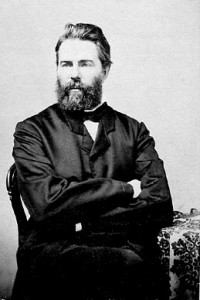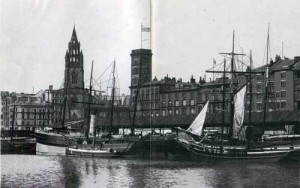So what then did the word ‘lascar’ mean in 19th century English?
When placed beside a crew list like that of the William Stewart, the Oxford English Dictionary’s terse definition (‘East Indian Sailor’) would seem to be no less misleading than that of those well-known 19th century lexicographers, Albert Barrère and Charles Leland (‘Malay sailor’).

That a single word should cast so large a net seems puzzling only from a landward, and contemporary, perspective. For European sailors of an earlier era, the word ‘lascar’ would have been paired with, and opposed to, another similar term, ‘kanaka’, which referred to the native seamen of the Pacific.[i] With an ocean as a referent, it is scarcely surprising that both these terms cast their net very wide; scarcely surprising either that both suffered the same fate, drowning under the derogatory racial freightage that came to be loaded upon them.

That lascars were a richly cosmopolitan group is beyond question. Yet, no matter whether they were from South Asia, East Africa, the Arabian Coast, or the Malay archipelago, these sailors were lumped together once they stepped on board.
Words often create their own reality: it is easy to imagine that living in the cramped bowels of sailing ships, coping with conditions of extreme danger and difficulty, men from every edge of the Indian Ocean came to share in an experience which, although similar to that of sailors everywhere, was also different in that it was salted with a particular kind of brine.
It is common nowadays to hear ‘diversity’ being spoken of as though it were some thrilling new invention. But it is unlikely that there were ever any more diverse collections of people – albeit only men – than the crews of merchant ships in the age of sail.[ii]

No one was more keenly aware of this, or represented it to better effect, than Herman Melville, especially in the startling 40th chapter of Moby Dick, where the Pequod’s crew begin to sing, in a great outpouring of tongues, and it becomes apparent that this small Nantucket whaling ship is a floating Babel, with sailors from Holland, France, Malta, Long Island, the Azores, Tahiti, Sicily, the Isle of Man and China.
There is of course a token Lascar, whose contribution to the merriment consists of: “By Brahma! boys, it’ll be douse sail soon. The sky-born, high-tide Ganges turned to wind! Thou showest thy black brow Seeva!”[iii] Nor is this the only Asian on the Pequod: Captain Ahab’s mysterious company of private harponeers consists, Melville tells us, of Parsees. The unlikeliness of this should cast no doubt either upon Melville’s curiosity or his powers of observation – for he was one of the very few 19th century writers who actually took the time to look at the world of the lascars with some attention.

In his autobiographical novel, Redburn, based on his earliest experiences as a seaman, Melville writes of a vessel called the Irrawaddy which was docked in Liverpool when his own ship arrived there.
The Irrawaddy was a ‘country boat’, which was the term commonly applied to ships built in Asia, in the western style. In Liverpool the Irrawaddy and her lascar crew were something of a curiosity. “Every Sunday, crowds of well-dressed people came down to the dock to see this singular ship… It was amusing… to watch the old women with umbrellas, who stood on the quay staring at the Lascars, even when they desired to be private. These inquisitive old ladies seemed to regard the sailors as a species of wild animal, whom they might gaze at with as much impunity, as at the leopards in the Zoological Gardens.” [iv]
[i] Cf. Chappell, David A.: Double Ghosts; Oceanian Voyagers on EuroAmerican Ships, M.E.Sharpe, New York, 1994.
[ii] On this subject see also, Isaac Land: “Many of the naval victories and lucrative seaborne enterprises of the early nineteenth century were made possible by the labor of foreign, colonial, or “minority” seamen whose contributions are largely forgotten today. Britain continued to rule the waves, but only by relying on Lascars (sailors from South Asia and neighboring regions) to make up for its own manpower shortages in the merchant fleet. At Trafalgar, about 15% of Nelson’s “British” sailors were in fact from overseas, largely from other European countries but also from Africa, Asia, and the Americas.”(Bread and Arsenic: Citizenship from the Bottom Up in Georgian London, Journal of Social History, Volume 39, Number 1, pp. 89-110, Fall 2005.)
[iii] Moby Dick, Herman Melville, Penguin Popular Classics, 1994, p. 176.
[iv] Herman Melville: Redburn: His First Voyage, Being The Sailor Boy Confessions And Reminiscences Of The Son-Of-A-Gentleman In The Merchant Service, Anchor Books, New York, 1957, p. 165.
